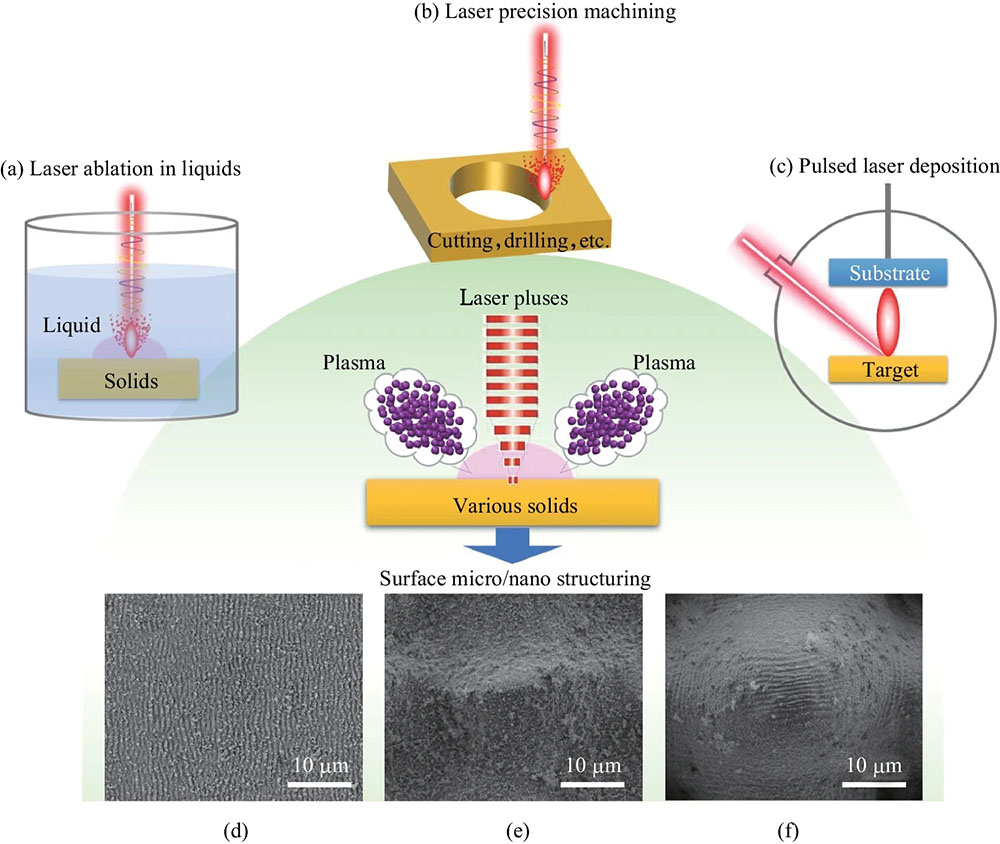PLD (Pulsed Laser Deposition): A Versatile Technique for Nanomaterial Synthesis
What is Pulsed Laser Deposition (PLD)?
Pulsed Laser Deposition (PLD) is a thin film deposition technique that utilizes a high-power pulsed laser beam to ablate a target material, creating a plasma plume that deposits the material onto a substrate. PLD is a versatile method for synthesizing a wide range of nanomaterials, including thin films, nanoparticles, and nanostructures, with precise control over composition, thickness, and morphology.

Key Features of PLD
PLD offers several unique advantages over other thin film deposition techniques:
- Stoichiometric Transfer: PLD allows for the congruent transfer of the target material's composition to the deposited film, making it suitable for the deposition of complex, multi-component materials.
- High Deposition Rate: The high energy density of the pulsed laser results in a high deposition rate, enabling the rapid synthesis of nanomaterials.
- Flexibility in Material Selection: PLD can be used to deposit a wide range of materials, including metals, oxides, nitrides, and even polymers, making it a versatile technique for nanomaterial synthesis.
- Low Substrate Temperature: PLD can operate at relatively low substrate temperatures compared to other deposition methods, allowing for the deposition of materials on temperature-sensitive substrates.
PLD Process Parameters
The properties of the deposited nanomaterials in PLD can be tuned by controlling various process parameters:
Laser Parameters
The laser wavelength, pulse duration, and fluence (energy density) significantly influence the ablation process and the resulting plasma plume. Shorter wavelengths and higher fluences generally lead to more efficient ablation and better stoichiometric transfer.
Target Material
The choice of target material determines the composition of the deposited nanomaterial. Single-element, alloy, or composite targets can be used to obtain desired material properties. The target's density, thermal conductivity, and optical absorption also affect the ablation process.
Substrate Temperature
The substrate temperature plays a crucial role in the growth and crystallinity of the deposited nanomaterial. Higher temperatures promote surface diffusion and crystallization, while lower temperatures may result in amorphous or nanocrystalline structures.
Background Gas
The background gas in the PLD chamber can be used to control the plasma plume dynamics and the stoichiometry of the deposited material. Reactive gases, such as oxygen or nitrogen, can be introduced to form oxide or nitride nanomaterials. The gas pressure also influences the mean free path of the ablated species and the deposition rate.
Applications of PLD in Nanotechnology
PLD has found numerous applications in the synthesis of nanomaterials for various fields:
Thin Film Deposition
PLD is widely used for the deposition of high-quality thin films for electronic, optical, and magnetic devices. Examples include transparent conducting oxides (TCOs), high-k dielectrics, ferroelectric materials, and superconductors.
Nanoparticle Synthesis
PLD can be employed for the synthesis of nanoparticles by ablating the target material in a background gas or liquid medium. The size, shape, and composition of the nanoparticles can be controlled by tuning the PLD parameters and the collection environment.
Nanostructured Surfaces
PLD can be used to create nanostructured surfaces with unique properties, such as enhanced catalytic activity, superhydrophobicity, or anti-reflectivity. By controlling the PLD parameters and the substrate morphology, various nanostructures, such as nanorods, nanowires, and nanopatterns, can be obtained.
Challenges and Future Perspectives
Despite the numerous advantages of PLD, some challenges remain to be addressed. One of the main limitations is the relatively small deposition area compared to other thin film deposition techniques, which hinders its scalability for large-scale production. Efforts are being made to develop large-area PLD systems and optimize the process parameters for improved uniformity and throughput.
Future research in PLD will focus on the synthesis of novel nanomaterials with tailored properties for emerging applications, such as quantum computing, neuromorphic devices, and energy storage. The combination of PLD with other nanofabrication techniques, such as nanoimprint lithography or self-assembly, will enable the creation of complex, hierarchical nanostructures with enhanced functionality. Additionally, in situ characterization techniques, such as time-resolved spectroscopy and microscopy, will provide deeper insights into the PLD process and guide the optimization of nanomaterial synthesis.
Further Reading
Optical and Quantum Electronics, A comprehensive review on pulsed laser deposition technique to effective nanostructure production: trends and challenges
Chemical Society Reviews, A practical guide to pulsed laser deposition
